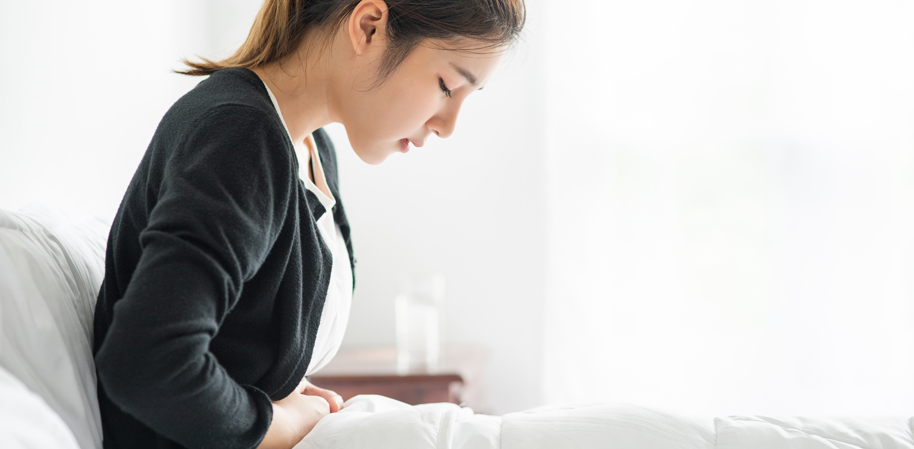Chronic pelvic pain is defined as pain in the pelvic region that lasts for six months or longer. It can significantly impact daily activities, emotional well-being, and overall quality of life. Understanding the common causes and symptoms of CPP is crucial for effective diagnosis and management.
Common Causes of Chronic Pelvic Pain:
1. Gynecological Causes:
-
Endometriosis: A condition where tissue similar to the lining inside the uterus grows outside the uterus, causing severe pain, especially during menstruation.
-
Pelvic Inflammatory Disease (PID): An infection of the female reproductive organs, often caused by sexually transmitted infections (STIs), leading to chronic pain and discomfort.
-
Ovarian Cysts: Fluid-filled sacs on the ovaries that can cause sharp or dull pelvic pain.
-
Uterine Fibroids: Non-cancerous growths in the uterus that can lead to pressure and pain in the pelvic area.
-
Adenomyosis: A condition where the inner lining of the uterus breaks through the muscle wall of the uterus, resulting in painful periods and chronic pelvic pain.
2. Urological Causes:
-
Interstitial Cystitis (IC): Also known as painful bladder syndrome, IC causes chronic bladder pressure and pelvic pain.
-
Urinary Tract Infections (UTIs): Recurrent UTIs can lead to ongoing pelvic pain and discomfort.
-
Prostatitis: Inflammation of the prostate gland in men, causing pelvic pain and urinary symptoms.
3. Gastrointestinal Causes:
-
Irritable Bowel Syndrome (IBS): A disorder affecting the large intestine, IBS can cause cramping, abdominal pain, bloating, and changes in bowel habits.
-
Inflammatory Bowel Disease (IBD): Conditions such as Crohn's disease and ulcerative colitis can lead to chronic inflammation and pain in the digestive tract.
-
Constipation: Chronic constipation can cause pelvic pain due to the pressure of impacted stool on the pelvic organs.
4. Musculoskeletal Causes:
-
Pelvic Floor Dysfunction: Weak or tight pelvic floor muscles can lead to chronic pain and difficulty with bowel and bladder functions.
-
Hernias: Inguinal or femoral hernias can cause pain in the lower abdomen and groin area.
5. Neurological Causes:
-
Nerve Entrapment: Nerves in the pelvic region, such as the pudendal nerve, can become trapped or irritated, causing chronic pain.
-
Neuropathic Pain: Damage to the nervous system can result in persistent, debilitating pain in the pelvic area.
6. Psychological Causes:
-
Chronic Stress: Emotional and psychological stress can exacerbate or even cause chronic pelvic pain.
-
Depression and Anxiety: These mental health conditions are often linked with CPP, creating a cycle of pain and emotional distress.
Common Symptoms of Chronic Pelvic Pain:
-
Persistent Pain: Continuous or intermittent pain in the lower abdomen or pelvic area, which may be dull, sharp, or cramping.
-
Pain During Intercourse: Pain during or after sexual activity, known as dyspareunia, is a common symptom of CPP.
-
Menstrual Pain: Severe menstrual cramps (dysmenorrhea) that go beyond normal period pain.
-
Urinary Symptoms: Frequent urination, urgency, and pain during urination.
-
Bowel Symptoms: Pain during bowel movements, constipation, or diarrhea.
-
Lower Back Pain: Pain that radiates to the lower back and hips.
-
Fatigue: Chronic pain can lead to significant fatigue and decreased energy levels.
-
Emotional Distress: Anxiety, depression, and irritability are often associated with chronic pain conditions.
Diagnosis and Management:
1. Diagnosis:
-
Medical History and Physical Examination: A thorough medical history and physical examination are essential for diagnosing the underlying cause of CPP.
-
Imaging Tests: Ultrasound, MRI, or CT scans may be used to identify structural abnormalities.
-
Laparoscopy: A minimally invasive surgical procedure to diagnose conditions like endometriosis or adhesions.
-
Laboratory Tests: Blood tests, urine tests, and cultures to check for infections or other conditions.
2. Management:
-
Medications: Pain relievers, hormonal therapies, antibiotics, or antidepressants may be prescribed based on the underlying cause.
-
Physical Therapy: Specialized pelvic floor physical therapy can help alleviate pain and improve muscle function.
-
Surgery: Surgical intervention may be necessary for conditions like endometriosis, fibroids, or adhesions.
-
Counseling: Psychological support and counseling can help manage the emotional aspects of chronic pain.
-
Lifestyle Modifications: Regular exercise, a balanced diet, and stress management techniques can improve overall well-being and reduce pain.
Chronic pelvic pain is a multifaceted condition with various potential causes and symptoms. Accurate diagnosis and a comprehensive treatment plan tailored to the individual are crucial for effective management. By understanding the common causes and symptoms of CPP, individuals can seek timely medical intervention and improve their quality of life.




